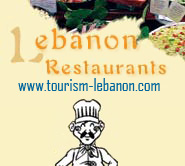
» Tips For Wine Lovers Wine Tasting - The Sense of Sight Wine tasting basics begin with knowing how to use your senses to understand, interpret, and enjoy the wine. The ability to recognize what you see, and furthermore describe it in clear terms, is a very important wine tasting skill. Although some may say the appearance of the wine is the least important aspect with regard to the senses, it is still worth noting. When examining appearance, we are looking for clarity and color. We want the wine to be free of any sediment, leaving it clear and brilliant. Red wines tend to lose their color as they mature, while white wines tend to grow darker with age. A good quality wine generally will be intense in color. The "legs" seen running down the sides of a glass after being swirled, are an indication of flavor density. It is best to use a plain white background, and tilt the glass slightly as you observe clarity and color. Wine Tasting - The Sense of Taste After observing your wine using the sense of sight and smell, it is then time to use your palate to identify tastes. This is far more detailed than simply tasting as we would any other beverage. We must remember to note the characteristics of the wine on all sensory areas of the tongue. Sweetness is detected on the very tip of the tongue, while bitter tastes are sensed in the extreme rear. Saltiness is sensed on the front, upper sides of the tongue, and the acidity-sour taste is sensed mainly on the sides. Some suggest focusing your attention on one sensation at a time in order to be more efficient in your taste. Try taking a sip of wine and swallowing immediately. Then try another sip, this time letting the wine work well around the palate into these sensory areas before swallowing. You will recognize a noticeable difference in the intensity of flavors! Wine Tasting - The Sense of Touch Touch is an important category of taste sensation. This is where we try to feel the wine on the palate. Here we seek to find impressions of such things as texture, body, temperature, and astringency. The aftertaste, finish, and length of a wine are all things we feel on our palate. We are looking for how the wine feels in weight (light, medium, full) and texture (silky, coarse, velvety). Try to observe how long the sensations last in your mouth. Most will tell you the longer it lasts, the better the wine! While visiting the Bekaa Valley, enjoy wine tasting at the well known Lebanese wineries. Today there are at least six wineries in the Bekaa Valley where visitors are regularly welcome. Combined with visits to the Roman ruins at Baalbek and Anjar, the town of Zahleh, the tomb of Noah in Kerak, the marshlands of Amiq, the Jesuit monastery at Tanail and Lake Qaroun, they make for a full day's excursion.
Château Ksara has been making wine since 1857, a tradition started by the Jesuit brothers. The estate is a rich source of Bekaa history. It is home to the first observatory in the Middle East and has two kilometers of Roman passages now used as the winery's cellars. Ksara offers guided tours. There is a tasting room and a gift shop as well as a sound and light show in various languages.
Tel: +961 08 813495/818254
Located on the Chtaura main road just past the Massabki Hotel, is Domaine Des Tourelles. A phone call to Christiane Issa, giving at least 24 hours notice, will guarantee a tour of one of the oldest wineries in the Bekaa (with many of the original features that date back to the turn of the century) culminating with a tasting in the winery's garden, where Christiane will also offer you her special concoction of triple sec served in a chocolate cup.
Tel: +961 03 775943.
Massaya serves country-style lunches made from Bekaa produce and prepared by local cooks. The lunches are served all year round - indoors in winter around a huge roaring fire and in the gardens in spring, summer and autumn - and the all-in price of around £12 includes unlimited wine and arak. In the summer there are open-air blues concerts, fuelled by Ramzi Ghosn's arak jellies. Bookings required.
Tel: +961 08 510135
For a day trip to the picturesque Western Bekaa, start with Clos St Thomas, located at the far end of Qab Elias in the West Bekaa. Either Sayeed Touma, his daughters or at the very least someone from the staff will let you taste the six wines. Said also makes a port-like liqueur, and if you are very lucky he may let you taste his brandy.
Tel: +961 08 500812.
Then head south, taking a leisurely drive past the beautiful swamps at Amiq and the billowing silver birches that line the crop fields to Cave Kouroum. The Rahal family, which owns the winery, has plans to open a restaurant and motel by the spring, but for the time being the tasting room is up and running. Just show up.
Tel: +961 05 953401.
A few kilometers further south is Château Kefraya, with its manicured lawns, tasting room and highly rated restaurant. There is an extensive menu and wines are sold at off-trade prices. Bookings required during the summer and holiday periods.
Tel: +961 08 645333




